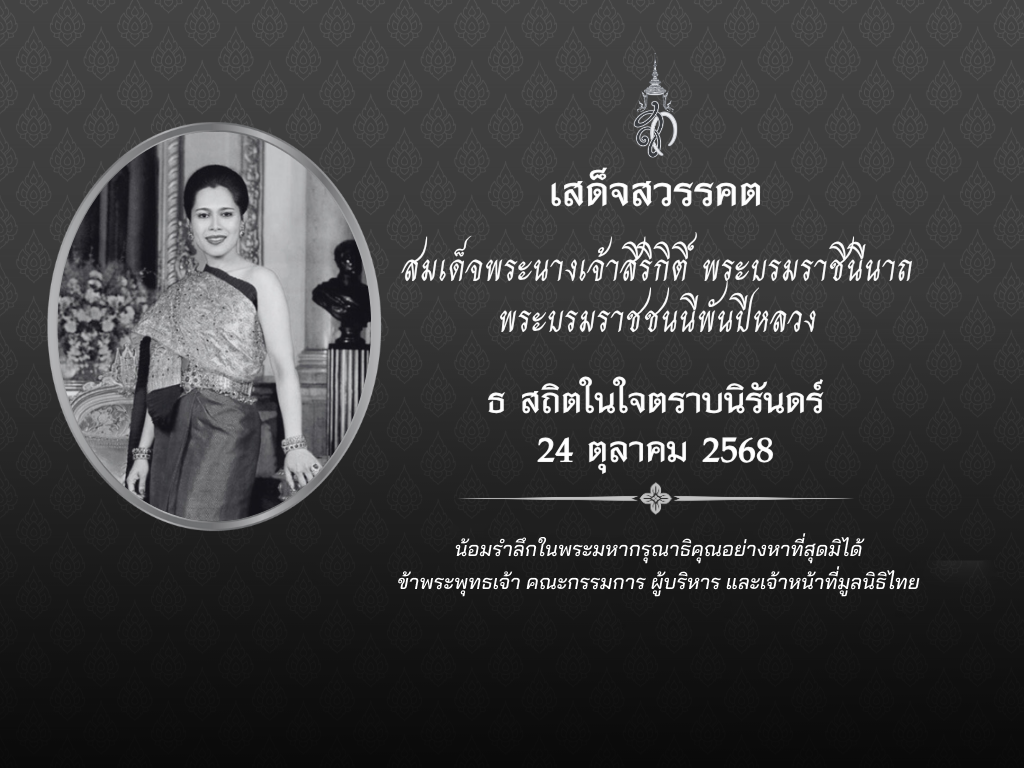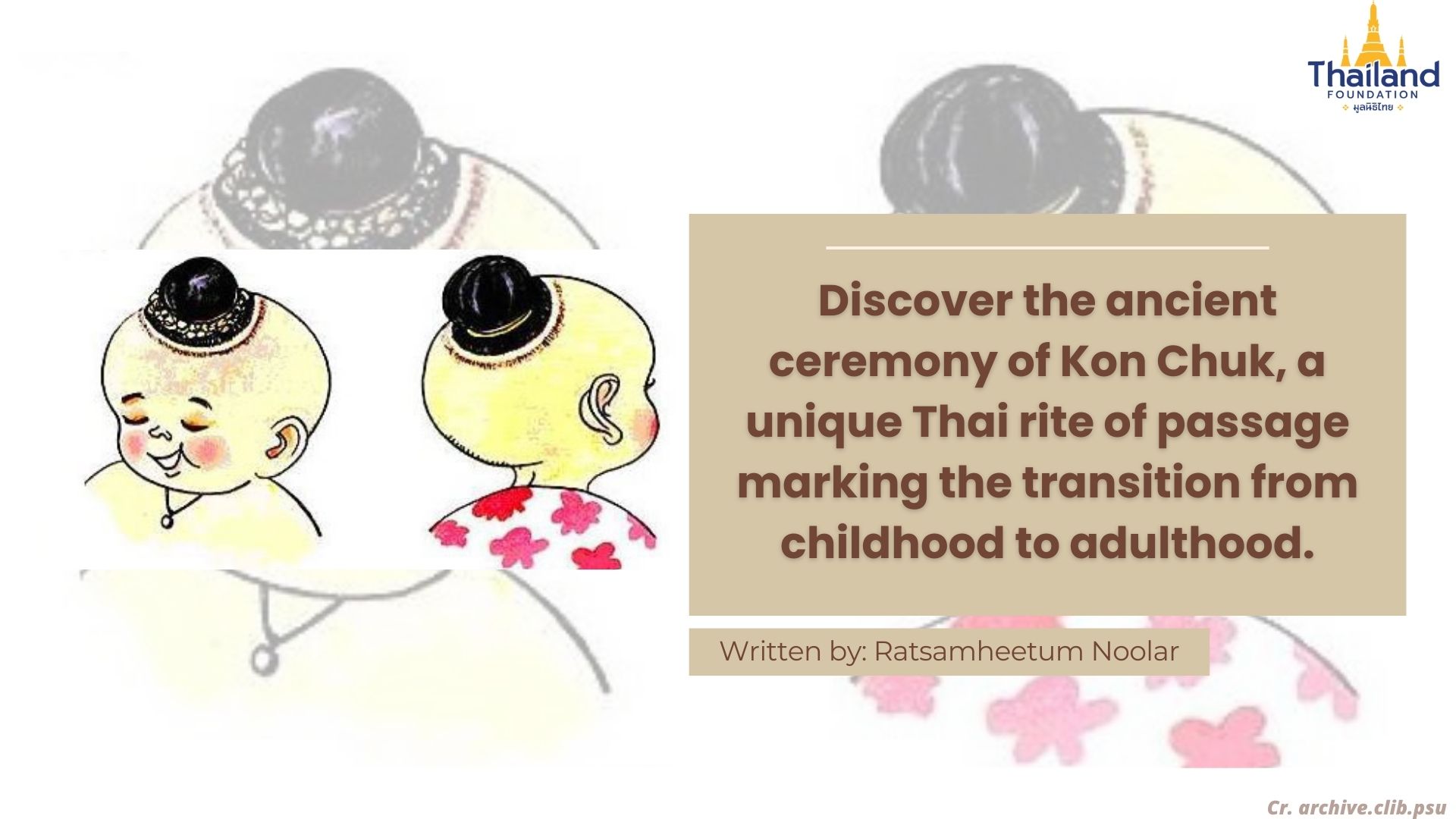
The transition from childhood to adulthood is a significant milestone that every culture celebrates in its unique way. Around the world, many cultures have developed their own ceremonies to mark this rite of passage. In some societies, becoming an adult requires demonstrating strength or bravery, while others believe that adulthood begins with becoming a warrior or getting married. As Thai people, we also share this universal practice of marking the transition to adulthood.
This article invites you to explore the traditional Thai coming-of-age ceremony known as “Kon Chuk.” We will delve into its history, rituals, and cultural and spiritual significance, reflecting Thai beliefs and traditions. Let’s journey together to understand how this sacred ritual is practiced in Thailand.
Background
“Kon Chuk” (โกนจุก), or the Topknot-Cutting Ceremony, marks the transition from childhood innocence to adulthood. Before we explore the ceremony, it’s important to understand its precursor, the “Kon Phom Fai” (โกนผมไฟ) ceremony. When a child is one month old, their hair is partially cut, leaving only a small clump in the center of the scalp, which is sensitive to cold. Thai people believe that a child’s first-born hair, which grows in the womb, is unclean and must be removed for hygiene and health reasons. This remaining clump of hair is allowed to grow and is eventually coiled on top of the head, leading to the creation of the topknot.
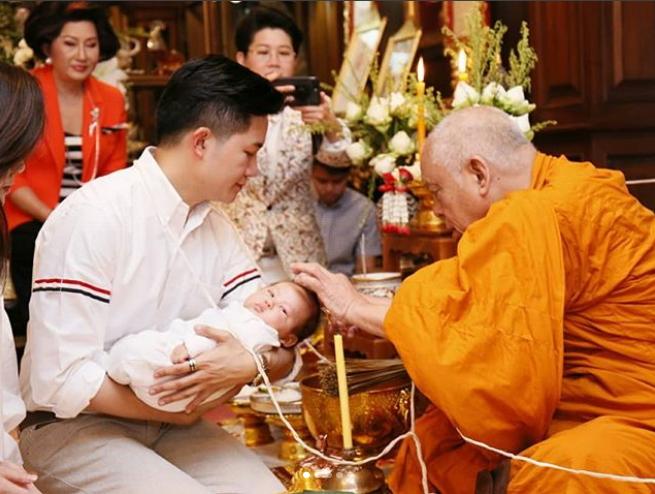
Kon phom fai ceremony (cr. unpuwanart)
As children grow and begin to interact with their surroundings, mothers mold clay dolls with various hairstyles for them to choose from. When a child consistently selects a particular hairstyle, it is believed to be a sign of good fortune, and the chosen style is adopted for the child, regardless of gender. Common traditional hairstyles for Thai children included:
Chuk (จุก) or Topknot: Hair is coiled and knotted at the top of the head. This style was popular among royalty and the wealthy, who often adorned the topknot with hairpins or garlands. For commoners, a simple cloth might be used to tie the hair.
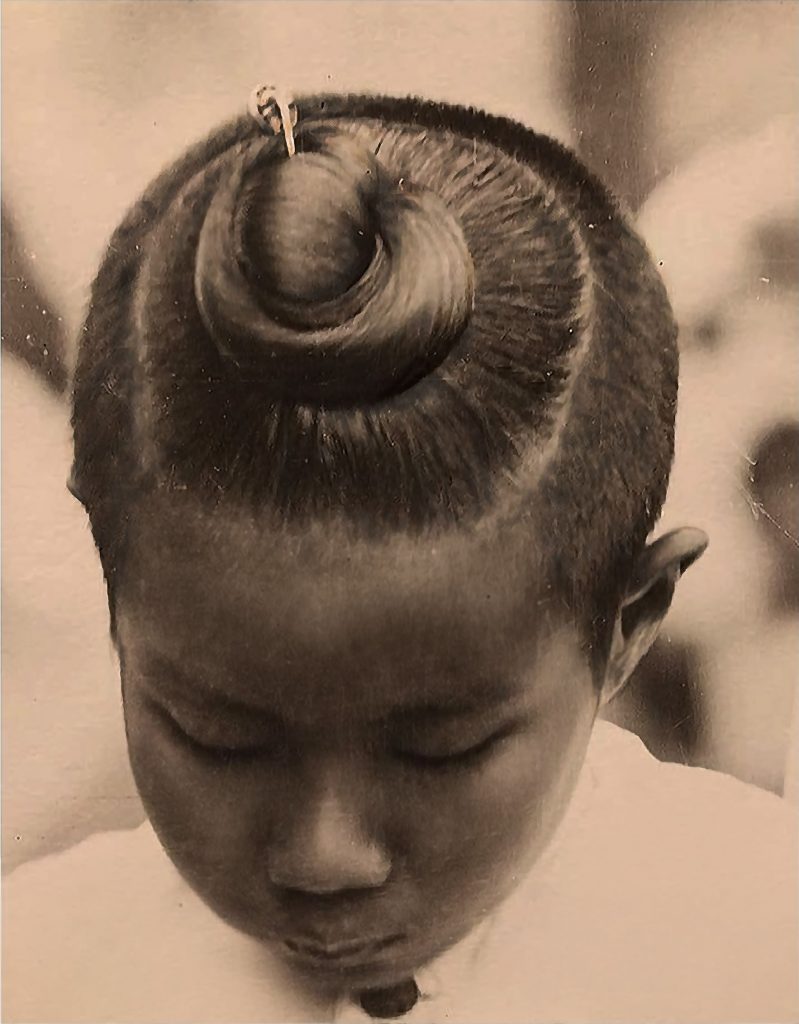
(cr. thaistylestudio1984.com)
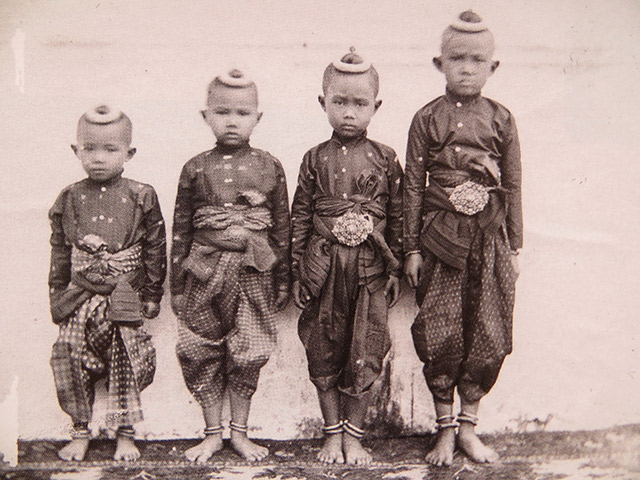
(cr. artbangkok.com)
Klae (แกละ) or Pigtails: Hair is shaved except for clumps on either or both sides of the head, sometimes forming multiple pigtails.

(cr. thaistylestudio1984.com)
Kho (โก๊ะ):The head is shaved except for a tuft of hair on the crown, known in Thai as “Kwan” (ขวัญ). Unlike the Chuk style, this hair is left to hang down rather than being coiled.
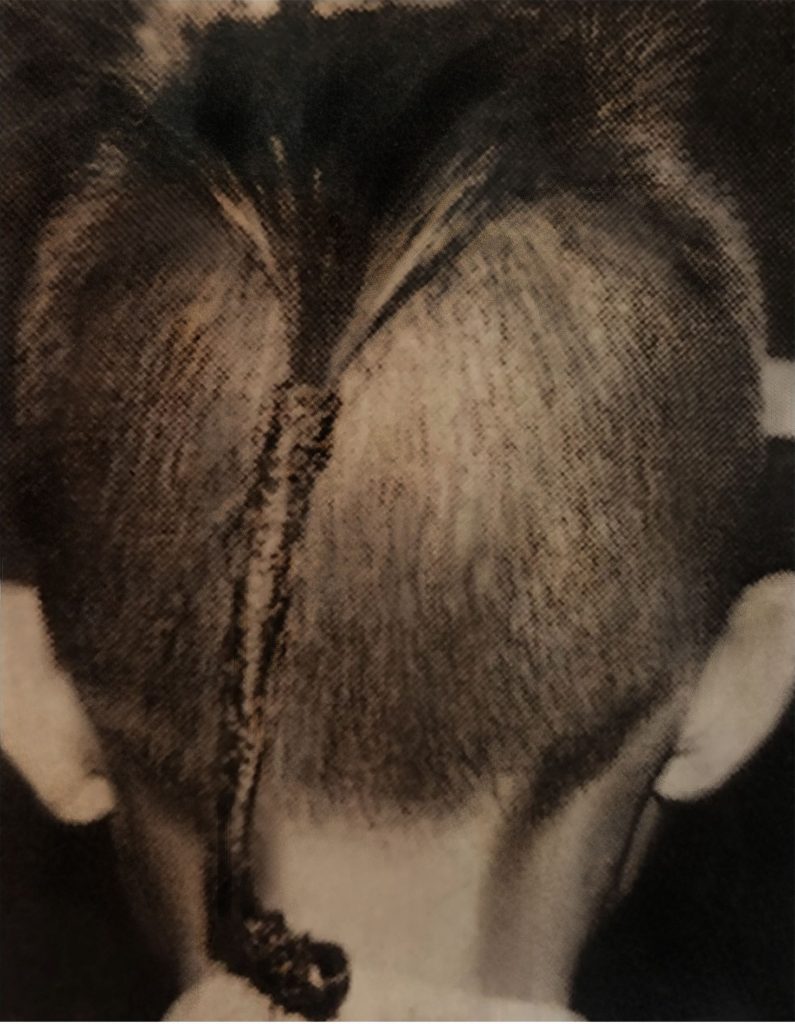
(cr. thaistylestudio1984.com)
Pia (เปีย) or Braid: Similar to the Kho style, but the hair is braided for a neater appearance.
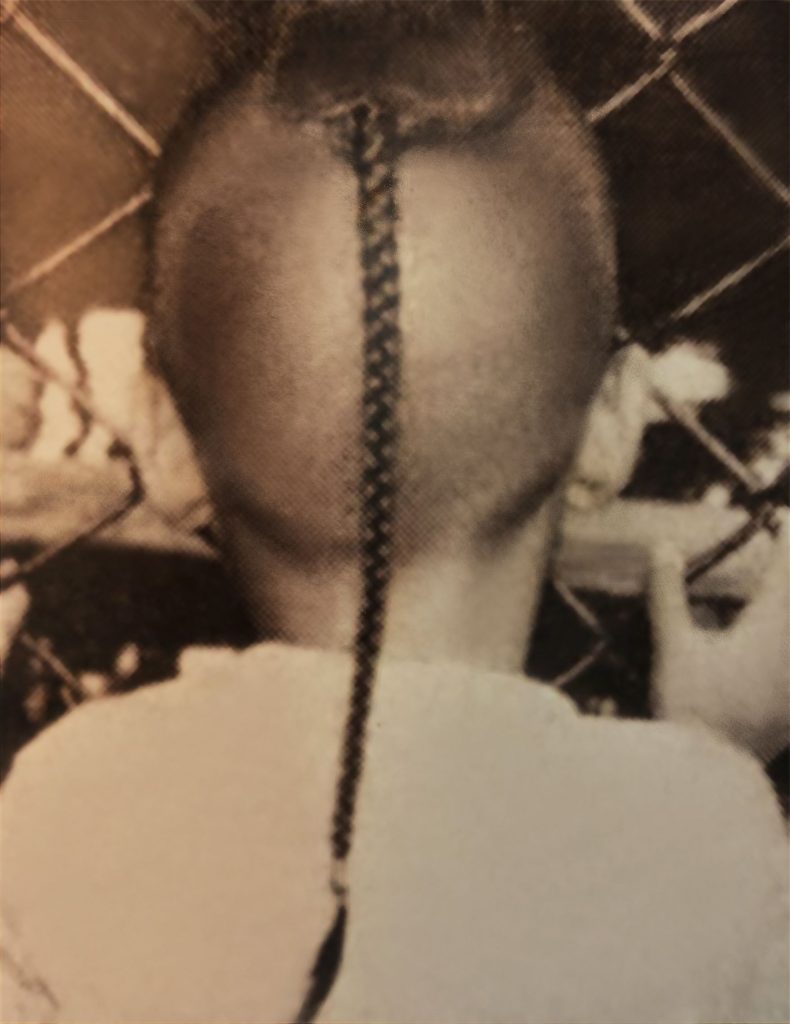
(cr. thaistylestudio1984.com)
These hairstyles not only reflect traditional Thai aesthetics but also carry deep cultural significance. They are influenced by a blend of Buddhist, Hindu, and animist beliefs, as seen in the Kon Chuk ceremony. In India, similar rites of passage include the “Chudakarana” (จูฑากรรม), or the first hair-shaving ceremony, and the “Upanayana” (อุปนัยนะ), where the topknot is cut, symbolizing the acquisition of knowledge and entry into adulthood. Although the origin of the topknot is not entirely clear, it is widely believed to offer divine protection to children by resembling the hairstyle of gods. In animist traditions, Thai people believe that wearing a topknot helps ensure a child’s discipline, obedience, well-being, and protection from evil spirits. In Thai culture, Buddhism plays a central role in these ceremonies, with monks leading and performing the rituals from start to finish. Thus, Kon Chuk reflects a rich blend of spiritual traditions.
History
While there is no definitive evidence of when the topknot-cutting ceremony first began in Thailand, it is believed to be an ancient tradition. Records from the royal annals describe the “Sokan” ceremony during the Ayutthaya period, indicating that this rite of passage has long been significant. In the past, the topknot-cutting ceremony incorporated both Buddhist and Brahmin practices and could last for six days. During the Rattanakosin period, under King Rama I, the bathing ritual on Mount Kailash was introduced and occasionally performed. According to royal records, the Sokan ceremony during this period was grand, lasting seven days. However, King Rama V later shortened the ceremony to three days to adapt to changing times. The ceremony continued until it was officially ended during the reign of King Rama VII in 1931.
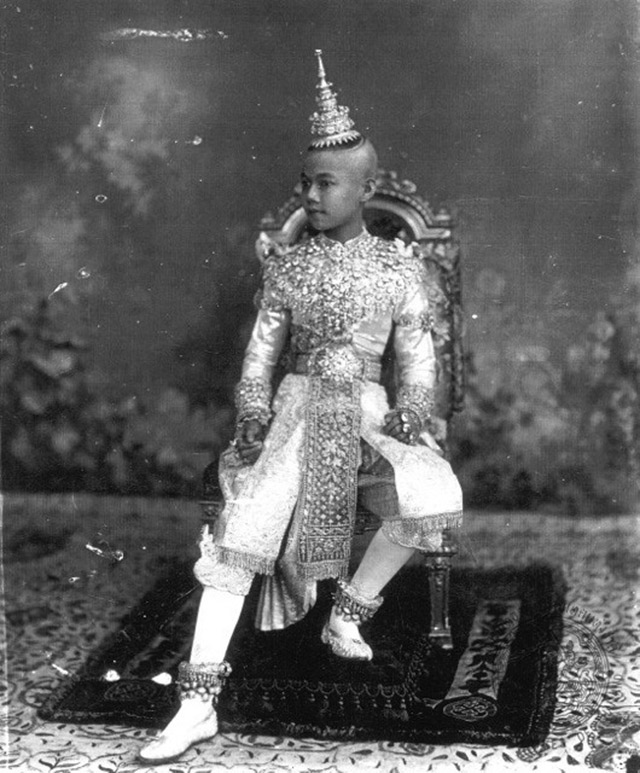
A royal in regalia before Sokan ceremony
(cr. artbangkok.com)
The topknot-cutting ceremony among commoners, known as Kon Chuk, is believed to have been inspired by the Sokan ceremony performed among the royal class. Over time, Thai locals adapted and simplified the ritual, making it less elaborate but still holding the same underlying meaning. Unfortunately, the traditional topknot-cutting ceremony has become rare and is considered outdated due to modern hygiene practices and the influence of Western lifestyles. While some children might feel alienated by wearing a topknot, modern hairstyles like short hair for boys and braids for girls are now seen as neat and appropriate. However, the Kon Chuk ceremony has not disappeared entirely and can still be observed in some local communities. At the Devasathan Shrine in Bangkok, Royal Brahmins still perform the Kon Chuk ceremony for the public at the end of the Triyampavai-Tripavai Royal Ceremony.
Ritual
The ceremony is traditionally performed when girls reach the age of 11 and boys are between 13 and 15 years old. This important transition into adulthood requires careful preparation. Parents must choose an auspicious day based on the child’s birth time, believing that their well-being and fortune depend on it. The house is cleaned and decorated with auspicious items, including a “Chatra” (ฉัตร) or royal umbrella, Thai hanging adornments, colorful buntings, an altar table, and monastic seats for the monks. The ceremony usually lasts two days.
On the first day, monks are invited to the house for an evening chant. The child, dressed in new clothes and adorned with ornaments, is paraded to the house to receive the precepts. As the chant progresses, the host places a sacred cord on the child’s topknot. Once the chant is complete, villagers strike a gong and joyfully celebrate the completion of the first day’s ceremony.
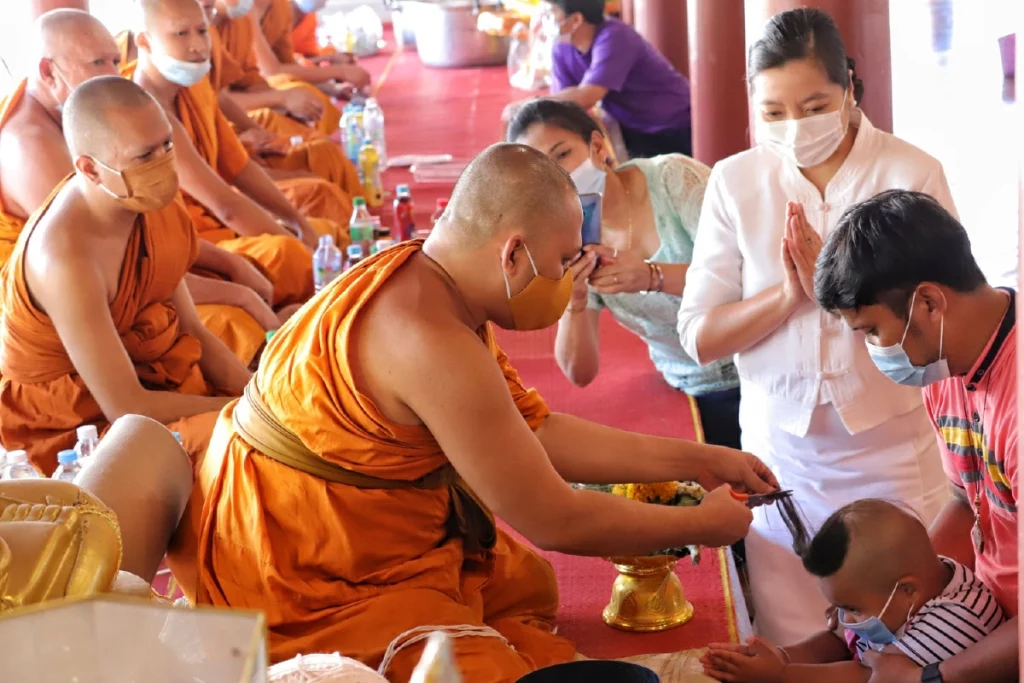
(cr. Post Today)
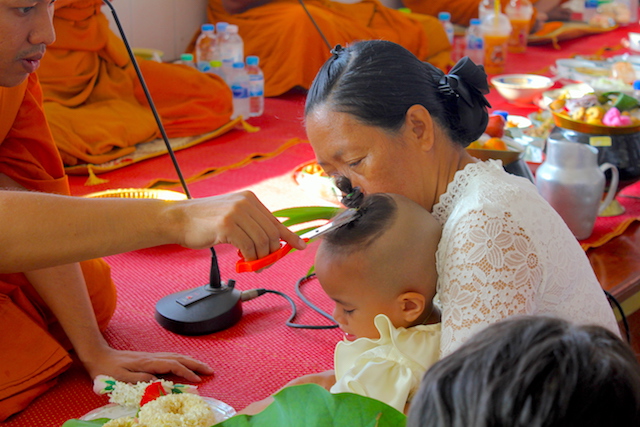
(cr. OK Nation: ฝายชะลอน้ำ)
The second day begins with almsgiving in the morning. The child, now dressed in white, is seated in the ceremonial area with their hair divided into three locks, each adorned with Navaratna rings, sacred cords, and Bael leaves. When the auspicious moment arrives, the gong is struck, and the monk begins the chant. An honored guest starts the ceremony by cutting the first lock, followed by the parents and other guests. After the topknot is cut and the head shaved, the child is sprinkled with holy water and blessed. The child then changes into new clothes, symbolizing the transition into adulthood, and offers gifts to the monks. The cut topknot is placed on a Krathong and floated down the river the next morning, symbolizing the release of misfortune and the hope for a blessed life.
For royalty, the topknot-cutting ceremony is known as “Sokan” (โสกันต์). It is performed when princes or princesses are between 11 and 13 years old. Royal astrologers determine the auspicious date and time for the ceremony, which incorporates both Buddhist and Brahmin practices. In the early Rattanakosin period, the Sokan ceremony was held alongside the traditional Solar New Year “Sampat Charachin” (สัมพัจฉรฉินท์) and the Lunar New Year “Triyampavai” (ตรียัมปวาย). The ceremony typically lasts three days, with monks delivering chants and sermons on the first two days. On the ceremonial morning, the prince or princess, dressed in pristine white, is led to the venue. At the appointed time, a court official uncoils the topknot and divides the hair into three locks, each adorned with sacred cords, nine gem-studded rings, and Bael leaves, symbolizing the Trimurti and kingship. The reigning king cuts the first lock, followed by senior relatives and the child’s father. After the topknot cutting and head shaving, the child is taken to a miniature of Mount Kailash for a purification ritual, followed by a blessing from the king. The Wian Tian ceremony is held afterward, and the hair is floated down the river the next morning, marking the end of the grand Sokan ceremony.
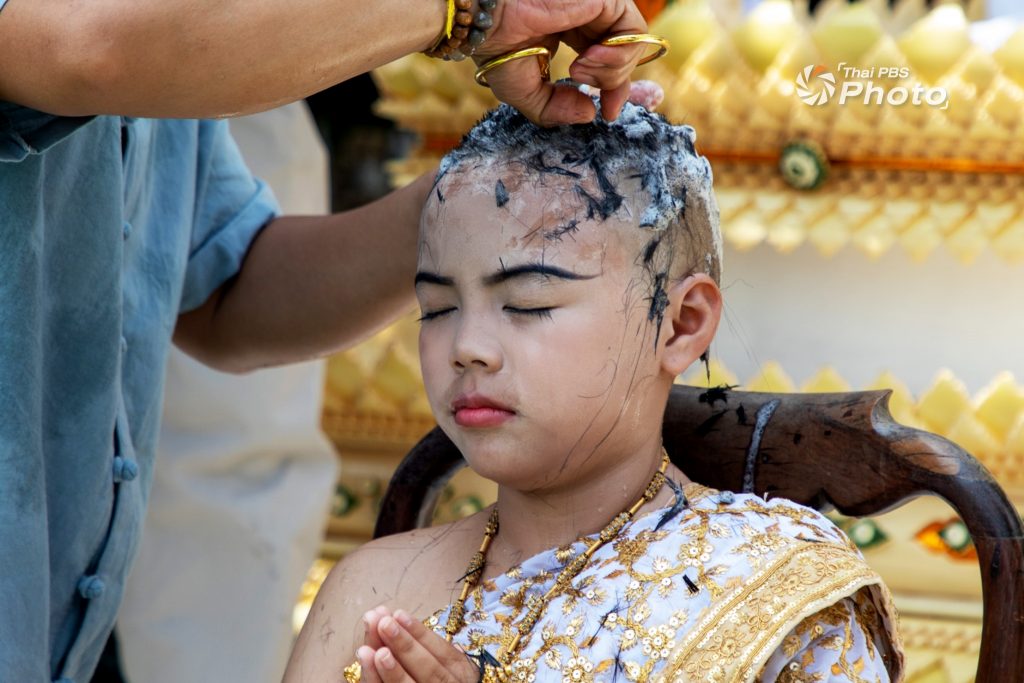
(cr. Thai PBS)
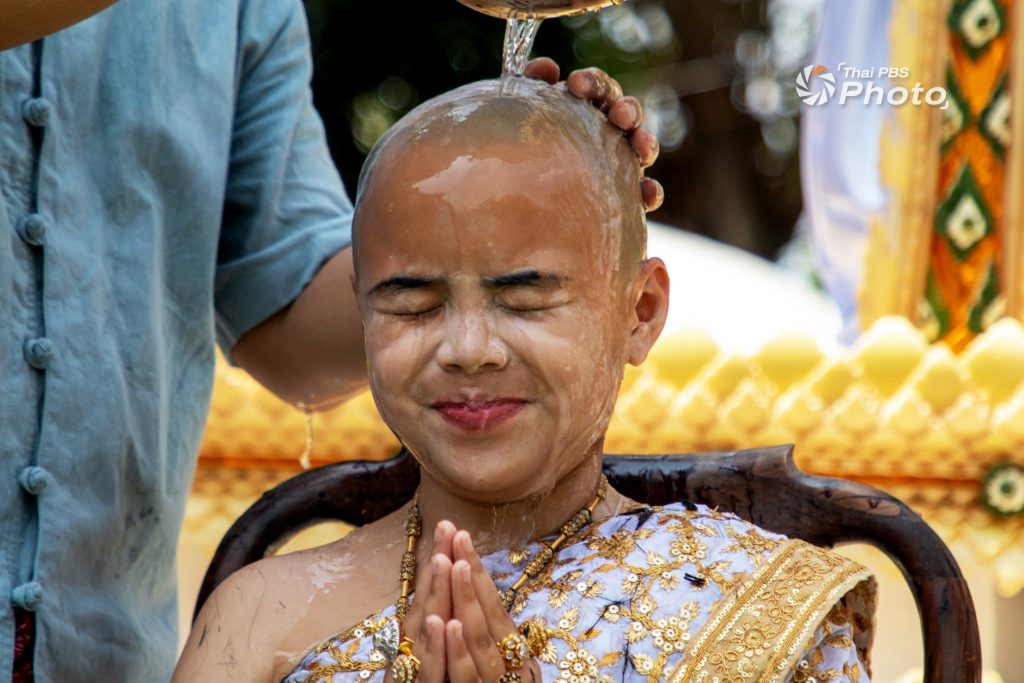
(cr. Thai PBS)
While both commoners and royalty perform topknot-cutting ceremonies, there are notable differences. The Sokan ceremony is more elaborate, with meticulous arrangements, intricate protocols, and lavish attire. Rituals like the bathing on Mount Kailash and the Wian Tian ceremony are reserved for royalty. In contrast, the Kon Chuk ceremony among commoners is simpler, with less elaborate attire and adornments.
Values behind the Ritual
The topknot-cutting ceremony is an ancient tradition deeply embedded in Thai society, rich in cultural and spiritual significance. First, it symbolizes the passage from childhood to adulthood, reminding children of the changes and responsibilities that come with maturity. Second, the ritual emphasizes compassion, as the blessings and religious rituals are believed to dispel negativity and bring good fortune to participants. The ceremony also fosters a sense of community by bringing together relatives and elders, while boosting the morale of the children as they enter a new chapter in life. Finally, the ceremony celebrates cultural inclusivity, blending Buddhist, Brahmin, and animist beliefs. This fusion is evident in the rituals, which incorporate elements from both Buddhist and Brahmin practices to promote the child’s well-being and protection. The Kon Chuk ceremony, therefore, stands as a testament to the richness of Thai culture, blending spiritual values with cultural inclusivity.
Conclusion
In conclusion, the topknot-cutting ceremony encapsulates the multifaceted essence of Thai culture. This tradition reflects the importance placed on a child’s rite of passage through religious rituals that mark the transition to adulthood. From past to present, regardless of social class, the Kon Chuk ceremony embodies cultural and emotional values that resonate with themes of spirituality, community, and openness of belief within Thai society. By embracing its significance, the Thai topknot-cutting ceremony remains a cherished cultural heritage, appreciated and passed down through generations.
Sources:
- https://www.finearts.go.th/storage/contents/2020/07/file/iECglmUBOsk7pC7CFfQ1QgrQ6gq3bEWNvoDftV2k.pdf
- https://thaistylestudio1984.com/ทรงผมเด็กไทยในสมัยโบราณ-ความเชื่อกับทรงผม
- https://www.bangkokpost.com/life/social-and-lifestyle/428778/luminescent-rite-of-passage
- https://wwwm-culture.go.th/phatumthani/ewt_news.php?nid=1934&filename=index
- https://www.culture.go.th/culture_th/ewt_news.php?nid=5157&filename=i
- https://www.youtube.com/watch?v=p2yV3DQGOgI
Written by: Ratsamheetum Noolar
Edited by: Tayud Mongkolrat
21 August 2024


